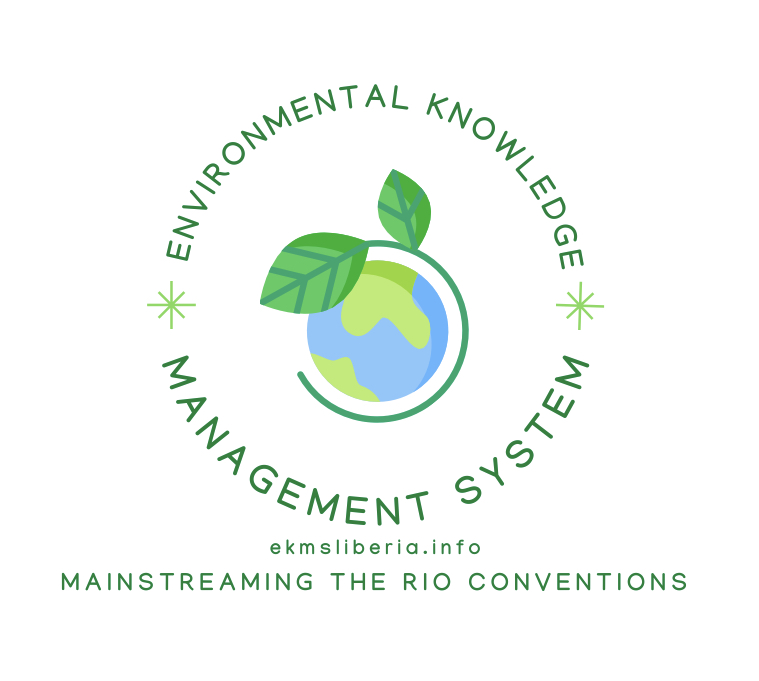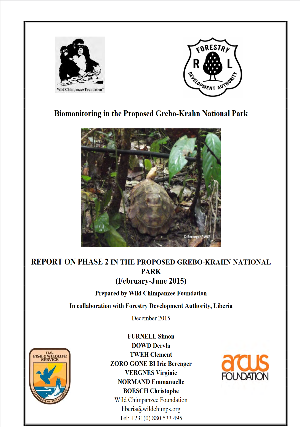A- Generalities and methods of biomonitoring program This report presents results from the biomonitoring program in 2015 in the Proposed GreboKrahn National Park (PGKNP), undertaken by survey team members from the Forestry Development Authority (FDA) and local communities, and with the supervision of the Wild Chimpanzee Foundation (WCF). Data was collected between the 26th February 2015 and the 17th of June 2015. A total of 249.32km of line transects were surveyed across the park, following the same systematic design from 2014. Data was collected on the signs of presence of large mammals, hunting and habitat disturbance (farming, mining, etc.). It was then analysed to determine the current status of wildlife and threats within the proposed park, as well as monitor their population trends.
B- Abundance and spatial distribution of large mammals in Proposed Grebo-Krahn National Park (PGKNP) Two types of information were recorded: direct observations of large mammals and other animals and their indirect observations (dung, footprints, vocalizations, feeding sites and sleeping nests for chimpanzee…). Data was analysed to determine the encounter rates for each species and the spatial distribution of target species (chimpanzees, monkeys, duikers, etc.). A population estimate of chimpanzees was also calculated and provided the current estimate of 313 individuals. The data supports the idea of a stabilisation of the chimpanzee population as it is within the confidence limits of the 2014 population estimate. Some variation in distribution and encounter rates of other mammals have been documented but a longer time perspective is needed before confirming potential population trends. The isolated patch in the south of the park is an important area for biodiversity and endangered species and signs of wildlife along the Cavalla River have increased since the first phase of biomonitoring.
C-Threats to wildlife of the PGNP The data collected on anthropogenic activities was treated in the same way as the wildlife data. Results seem do show a marked decrease in hunting activity, but these results must be treated with caution as the Ivorian border has been closed and there has been a ban on bush meat since the Ebola outbreak in Liberia. The expansion of Boley Village is now clearly having a negative effect of the wildlife in the horn in the north of the park. Chewing stick signs were still high within the park, but since the end of data collection law enforcement missions have taken place targeting chewing stick camps within PGKNP.
D-Conclusion and Recommendations Though PGKNP still harbours high levels of biodiversity and hunting levels have decreased, FDA needs to remain vigilant that hunting pressures do not increase in a post-Ebola environment. The eviction of Boley Village must be a priority as the negative impact of hunting and farming in this settlement is having an effect on the distribution of wildlife in the north of the park. Continuing the process leading to the pre-gazettement of the park is essential in 2016 with activities such as boundary line flagging, community consultations, regional and national level meetings needed before the gazettement package can be submitted.


